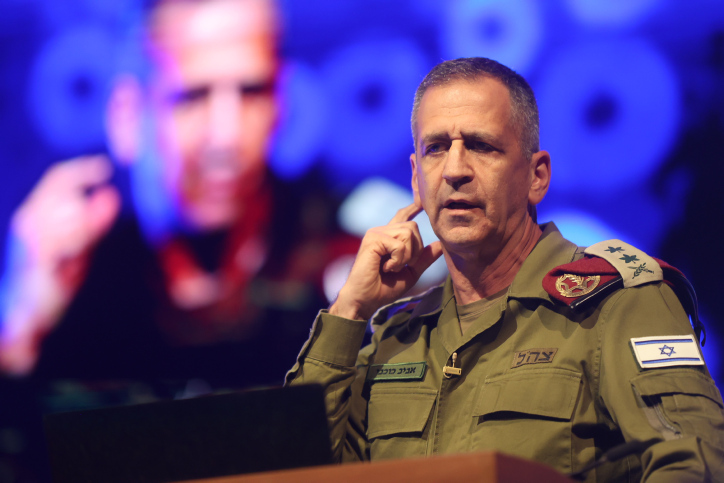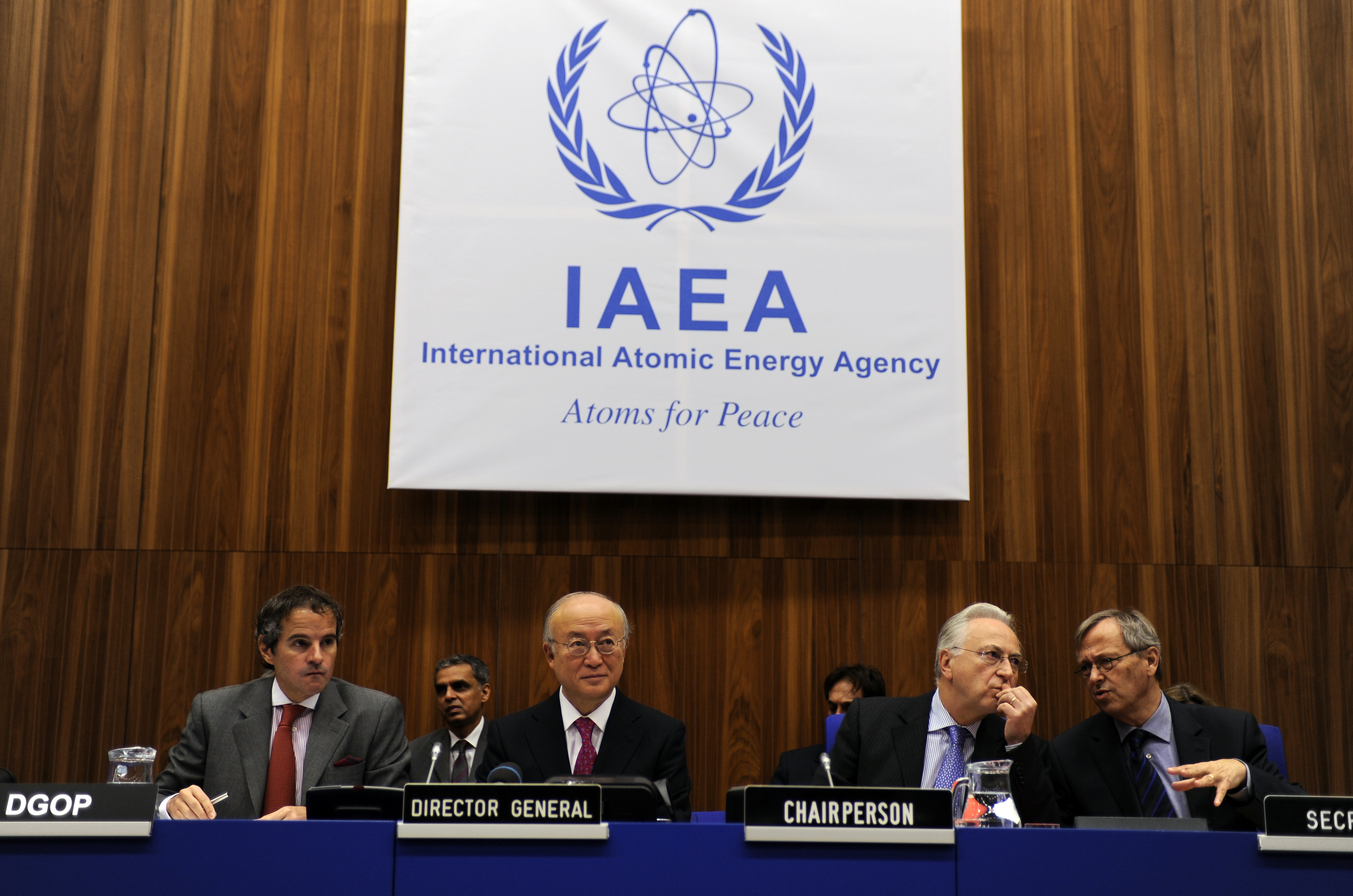The Israeli defense establishment’s senior officers have a range of views on the question of whether a return to the 2015 nuclear deal with Iran will cause more harm than good. The professional debate taking place over the No. 1 strategic issue facing the State of Israel can be seen as legitimate, and those seeking to study Israeli positions have an opportunity to take in all sides of the debate without seeking to politicize it.
Ultimately, every step in the strategic world of defense is weighed through cost-benefit analysis, both long and short-term, and this complex lens can and does lead to contrary positions. It is a measure of an open and healthy system, where officers can freely express their analysis before the General Staff finalizes its position and transmits it to the political echelon. Often, such briefings result in a “menu” of options with recommendations of which ones are more and less preferable.
Zamir stated that if the nuclear deal, which former U.S. President Donald Trump exited in 2018, is now brought back, it will lead to a “bad agreement” that is expected to create many challenges regarding future Iranian threats in light of Iran’s larger capabilities and the knowledge that Iran has amassed.
Such a deal, he cautioned, would energize Iran’s regional campaign to destabilize the region through its axis of terrorist proxies, and promote its ambitions for hegemony in the Middle East.
Meanwhile, the former head of the IDF Military Intelligence Directorate, Maj. Gen. (res.) Tamir Hayman, today director of the Institute of National Security Studies in Tel Aviv, told Israel Hayom in May: “At any point in time, things should be examined according to the data available. So what does Iran have at the moment? According to Defense Minister Benny Gantz, Iran already has more than 50 kilograms of uranium enriched to 60%, when one bomb requires 42 kilograms, meaning that they have exceeded the amount of fissile material sufficient to produce the first bomb.”
According to Hayman, “This means that the situation that would have happened once the nuclear deal elapsed [in 2030] wouldn’t have been as bad as the current situation, as Iran has stockpiled so much enriched material and its abilities have advanced beyond what the deal had allowed it to pursue. Therefore, my conclusion is that in the reality of here and now, reaching a deal is the right thing.”
In January 2021, IDF Chief Staff Lt. Gen. Aviv Kochavi made his own position clear, stating that a “return to the nuclear deal from 2015 or even a similar deal with a few improvements is bad and wrong. It is wrong operationally and strategically. Operationally, because it would again allow at its end, or before, the Iranians to enrich uranium, develop centrifuges and a weapons-capability [taking them up to] breakthrough. Strategically, it would present an intolerable threat to Israel and apparently spark a nuclear arms race in the Middle East. Hence, anything that resembles the current deal or an improved [version of that] agreement is wrong.”
He also called on sanctions pressure to continue “in every way.”

‘Responsible for the vast majority of negative dynamics’
From the defense establishment’s perspective, the first thing that needs to be noted is that Iran as a threat cannot merely be understood as activities taking place inside of its own borders. Iran runs a system of proxies and surrogates throughout the region. The Iranian-led radical axis is responsible for the vast majority of negative dynamics occurring in the Middle East—from Lebanon to Syria to Iraq, Yemen and also in the Gaza Strip.
Iran nourishes its axis with funds and military capabilities, proliferating weapons through planes, ships and ground convoys as close as it can towards Israel’s border. This cannot be divorced from Iran’s official ideological commitment to Israel’s eventual destruction.
It is in this context that the regime’s nuclear vision must be seen. Thus, Iran constitutes three interlinked threat pillars: its nuclear program, its conventional military capabilities and its regional axis. Put them together, and it becomes clear that Tehran wishes to obtain nuclear weapons in order to extend a nuclear umbrella over its axis, enabling it to take up a more aggressive position against Israel while sparking a nuclear arms race among Sunni powers that are also threatened by Iran.
Currently, all sides of the debate agree that the status quo is the worst situation, where Iran is rapidly making progress in its uranium enrichment, including to the alarmingly high degree of 60%, not far from the 90% military-grade enrichment level. At the same time, Iran keeps further restricting inspection abilities by the U.N. International Atomic Energy Agency (IAEA), and negotiations remain stalled.

Washington is sending mixed signals
This means that Iran’s nuclear program is the most advanced it has ever been. There are two ways to interpret this advancement when formulating a position on a return to the 2015 nuclear deal.
In light of such nuclear progress, there are some who view a return to the original deal as practically pointless. They call for a better, improved agreement that would keep Iran away from nuclear weapons for decades.
However, there are no signs that the international community is willing or able to pressure Iran into a better deal, which would have been designed to ensure that Iran does not have fissile material or the ability to quickly produce fissile material while disassembling its nuclear infrastructure and strengthening IAEA supervision.
An improved deal is undoubtedly the preferred outcome of the Israeli defense establishment, but since this is not on the table as a viable option and the international community is too fractured to unite behind such a vision (imagining China and Russia getting behind a new U.S.-led U.N. Security Council sanctions push for sanctions is entering fantasy land at this point), the only relevant question now is whether a poor deal is worse or better than a “no deal” reality. Those like Hayman reluctantly conclude that no deal is worse than one that is deeply flawed because lacking any deal at all, Iran would continue to push ahead.
In both scenarios, placing a credible military option back on the table would be critical to deterring Iran from breaking out into a nuclear weapon, yet it is only Israel that is currently invested in creating a deterrent posture and messaging Iran regarding its determination, while the United States is focused on superpower rivalry with China and Russia. Washington is sending mixed signals that seem to be a far cry from a firm military deterrent to Iran at this time.
The importance of a credible military threat should not be downplayed since Iranian Supreme Leader Ayatollah Ali Khamenei has no interest in involving his country in a direct war, which he fears could prove devastating for the goals of the Islamic Revolution. Instead, he prefers a safer and longer route to nuclear “immortality” for his regime, gradually moving in the direction of nuclear weapons while using Iran’s proxies, especially Hezbollah—steeped as it is in Southern Lebanon and operating elsewhere—as deterrents against pre-emptive attacks.
Ultimately, the defense establishment of Israel is searching for the least bad option. For some, that may mean an unenthusiastic acceptance of a U.S decision to return to the 2015 deal (should negotiations resume), though by no means is this a consensus position. The debate continues, accompanied by intensive Israeli preparations for the reality that a new deal would herald—an energized Iran, flushed with billions in cash that would help fund Hezbollah and other terror proxies, and sunset clauses in the nuclear deal that would expire in less than a decade.


























